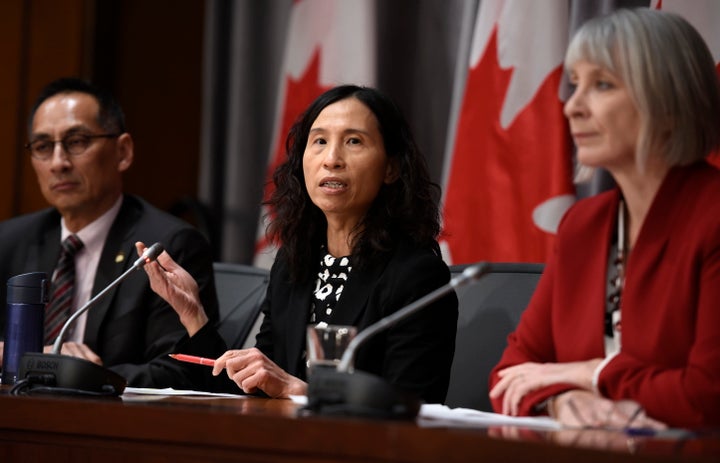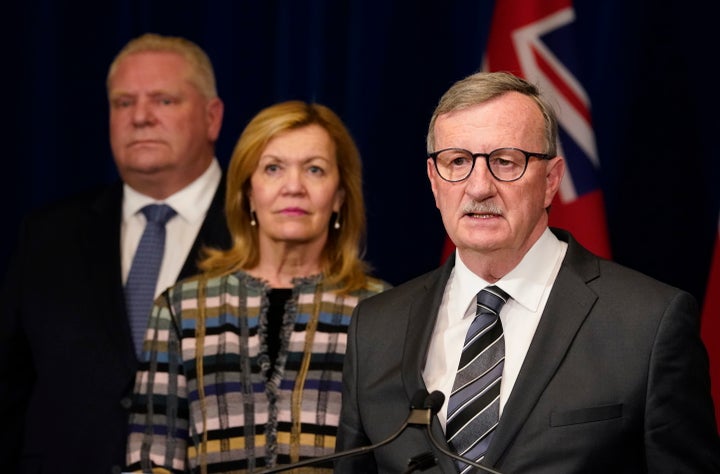OTTAWA — Canadians won’t know for two or three weeks if country-wide social distancing has curbed the spread of COVID-19, Canada’s chief public health officer said Thursday.
But in order to even get to that point, citizens need to start obeying government directives, warned federal, provincial and municipal leaders.
“Our collective resolve to overcome COVID-19 must be solid and undentable,” Dr. Theresa Tam said, during a press conference with federal cabinet ministers. “We don’t just need to flatten the curve, we need to plank it.
“And we need everyone — our government, the communities, families and individuals — to work together. We all have to get it right and get it right, right now, because the price of not doing so is too high.”

Quebec Premier François Legault told reporters not everyone is paying heed to the government’s messages.
“Let’s start off with those individuals who are over 70 years of age,” he said. “Now is not the time to be at the shopping mall. It’s not the time to go spend over an hour at lunch with your friends,” the premier said.
“Head home — Envoye à maison,” he told them, quoting a song by 85-year-old Quebec songwriter Jean-Pierre Ferland about a man who’s seen the world and is now heading home.
“Do the right thing.”
- Dr. Eileen de Villa, Toronto's chief medical officer
In Nova Scotia, Premier Stephen McNeil begged young people to take the issue seriously.
“No parties!,” he told university students.
New Brunswick Premier Blair Higgs enacted a state of emergency Thursday suggesting he had no choice but to force barber shops, golf courses and bars to close, because residents are not listening to directives.
“This is not a game,” he said.
In Toronto, Dr. Eileen de Villa, the city’s medical officer of health, urged non-essential businesses — hair and nail salons, clothing stores — to shut down.
“Do the right thing,” she said.

More than 800 cases of COVID-19 and 12 deaths were reported across the country Thursday, including Alberta’s first.
But the current picture of the spread of the novel coronavirus is badly dated.
“It’s a bit like watching the lights coming from a star,” said Tam. “You know what you see reported today is something that actually happened a while back, so certainly maybe two weeks back even, after the cases that would have contracted the illness and then they have to be tested,” she said.
In Ottawa, the city’s medical officer of health, Vera Etches, said it can take up to four or five days to receive final test results.
While the national capital doesn’t have any laboratory-confirmed cases of community spread, she estimates there could be anywhere from 200 to 1,000 undetected cases in the community.
“We need to act as if the virus is here, circulating in our community,” she said. Testing can’t track down each case of community spread because the symptoms are often mild and indistinguishable from common colds, she said, “and we cannot test large numbers.”
Ontario reported a huge spike in cases Thursday with 43 new diagnoses — the largest single-day increase — bringing the provincial total to 257. Officials also announced a second fatality, a man in his 50s from the Halton region with underlying health conditions.
The man had not travelled outside Canada recently and had no known links to any other individual with COVID-19, said Dr. Hamidah Meghani, Halton Region’s medical officer of health.
“This is the tragic proof that we need to work together to slow down the spread of COVID-19,” Meghani said.
The increase in case counts shouldn’t come as a surprise.
“The more we test, the more the numbers increase,” Legault said. Quebec is increasing its capacity, he added, to 5,000 tests a day.
Tam urges Canadians to ‘plank’ the curve
Dr. David Williams, Ontario’s chief medical officer of health, said he would not be surprised to see 50 or 60 new cases a day in the province.
Tam said what’s important is to watch what happens to the numbers reported in early April.
“In the next two weeks or so, what actually happens to that curve, that’s really really important,” she said. South Korea and China had more cases, and it took them about 2½ months to get the outbreak under control, she said. “What I would like to see in Canada, of course, is to not even get there. That’s why I am saying plank the thing, plank it, right now.
“So I’ll see how Canadians do in the next couple of weeks.”

When asked if tougher measures such as fining people who don’t obey quarantine and self-isolation orders might be contemplated, Tam didn’t say no.
“Our whole concept is to get everybody to do the right thing,” she said, noting that when SARS struck Toronto in 2003, residents did the “right thing.”
But a variety of quarantine measures are available for officials at different levels of government, she noted. Locally, for example, “there could be some circumstances, if someone is particularly high risk to someone else’s health, that such approaches can be exercised,” Tam said.
“But one is not aiming for that to be the key response.”
Prime Minister Justin Trudeau told reporters again Thursday that he expects the outbreak to last several weeks or months.
With a file from the Canadian Press